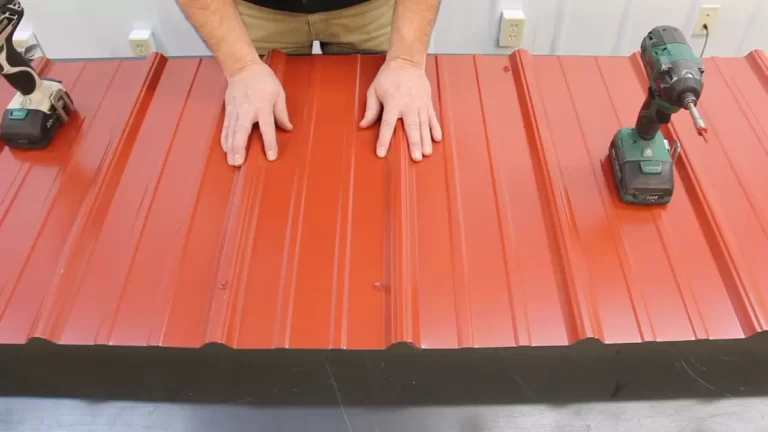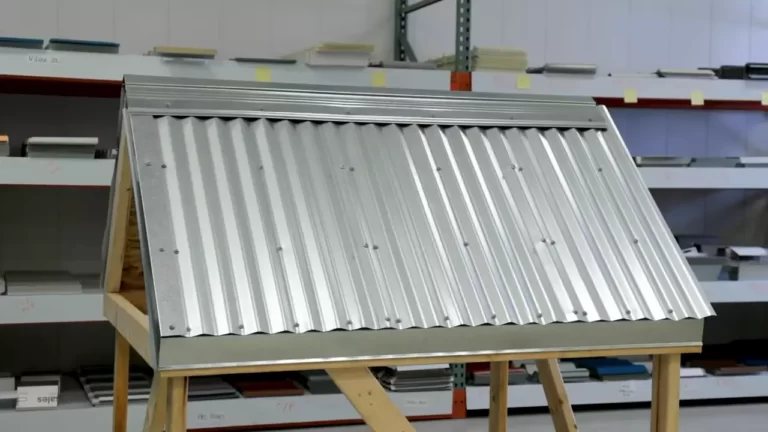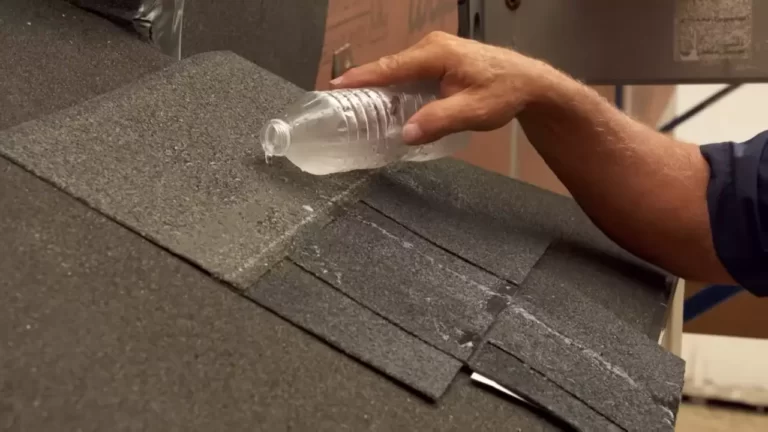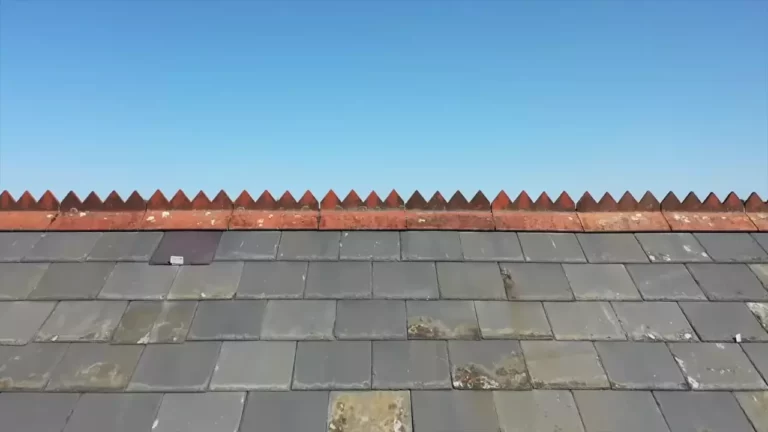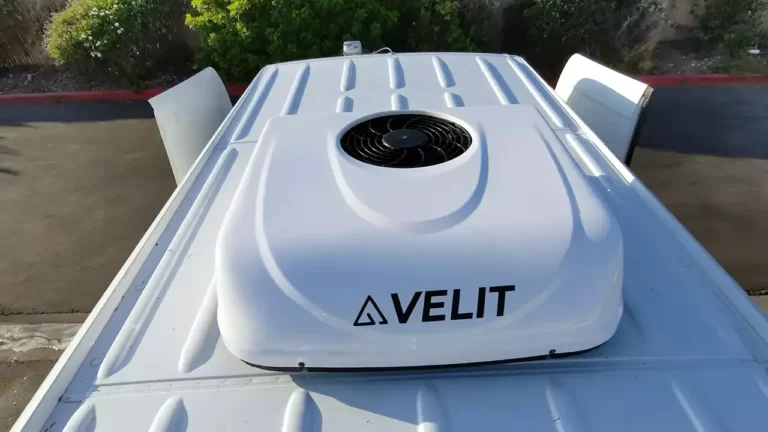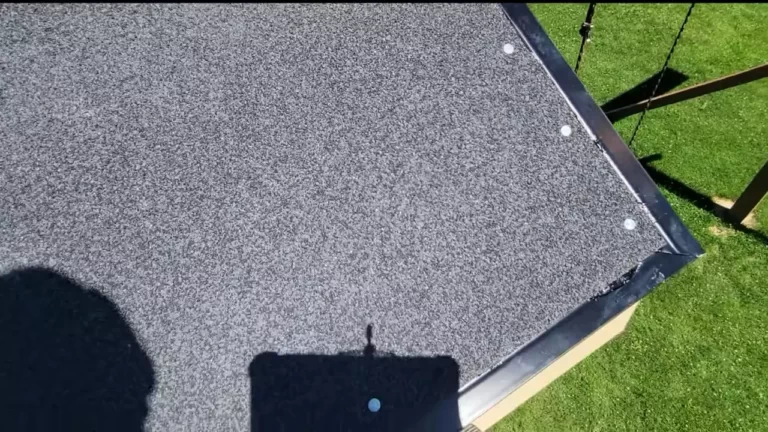How to Install a Soffit?
To install a soffit, begin by measuring and cutting the panels to fit the underside of the eaves. Once cut, secure the panels to the framing with screws.
Required Materials For A Successful Soffit Installation
Before you jump into installing a soffit, it’s important to gather all the necessary materials to ensure a smooth and successful installation process. From soffit panels to ventilation components, fasteners and screws to adhesive and sealant, having the right materials on hand will help you achieve a professional and long-lasting result. In this article, we’ll break down each of these required materials, discussing their types and the important role they play in the installation process.
Soffit panels and their types
Soffit panels are an essential component of any soffit installation project. These panels not only provide a finished look to the underside of eaves, but they also protect the underlying structure from moisture and other potential damages. When it comes to soffit panels, you have several options to choose from, depending on your specific needs:
| Type | Description |
|---|---|
| Vinyl soffit panels | These panels are lightweight, affordable, and low-maintenance. They come in a variety of colors and textures, allowing you to customize the look of your soffit. |
| Aluminum soffit panels | Known for their durability and resistance to extreme weather conditions, aluminum panels offer excellent ventilation and are often preferred for their longevity. |
| Fiber cement soffit panels | If you’re looking for a soffit panel that closely resembles wood but is more resistant to rot and pests, fiber cement panels are a great choice. They offer beauty, durability, and low maintenance. |

Ventilation components
Ventilation plays a crucial role in every soffit installation, as it helps circulate air and prevents moisture buildup, which can lead to issues such as mold and rot. When planning for ventilation components, consider the following options:
- Soffit vents: These vents are designed to fit into the soffit panels and allow air to enter the attic space.
- Ridge vents: Installed along the roof ridge, these vents work in conjunction with soffit vents to create a continuous flow of air through the attic, effectively removing excess heat and moisture.
- Box vents: These vents are typically installed on the roof and function as exhaust vents.
Fasteners and screws
In order to secure the soffit panels in place, you’ll need the right fasteners and screws. The choice of fasteners can depend on the material of your soffit panels, so make sure to select ones that are suited for the specific type of panel you’re working with. Common options include:
- Stainless steel screws: These screws are corrosion-resistant and ideal for outdoor applications.
- Galvanized nails: Galvanized nails are durable and provide excellent holding power. They are often used for wood or vinyl soffit installations.
- Aluminum nails: If you’re working with aluminum soffit panels, using aluminum nails is recommended to prevent galvanic corrosion.
Adhesive and sealant
Lastly, adhesive and sealant are necessary to ensure a strong and watertight bond between the soffit panels and surrounding surfaces. Take note of the following:
- Construction adhesive: This type of adhesive is commonly used to bond soffit panels to walls or other surfaces. It provides a strong and long-lasting hold.
- Silicone sealant: Silicone sealant is a flexible and waterproof material used to seal gaps and joints in the soffit installation, preventing water infiltration and improving overall durability.
By having these required materials at your disposal, you’ll be well-prepared to tackle your soffit installation project with confidence, ensuring a professional and seamless finish.
Inspecting And Measuring The Area For Soffit Installation
Before you dive into installing a soffit, it’s crucial to inspect the existing soffit condition, if applicable, and measure the area accurately to ensure a seamless installation. This step-by-step guide will walk you through the assessment process and provide you with the necessary dimensions for a successful installation.
Assessment of the Existing Soffit Condition, if Applicable
If you already have a soffit in place, it’s essential to assess its condition before proceeding with any installation. This will help you determine if repairs or replacement are necessary. Here’s what you need to do:
- Inspect the soffit for any signs of damage, such as rot, decay, or cracks.
- Check for any water damage or insect infestation.
- Examine the soffit joints for gaps or separation.
- Look for any signs of discoloration or fading that might indicate UV damage.
If you notice any of these issues, it’s advisable to address them before installing the new soffit.
Measuring and Calculating Dimensions for Accurate Installation
Accurate measurements are crucial to ensure that your new soffit fits perfectly and functions effectively. Follow these steps to measure and calculate the dimensions:
- Start by measuring the length of the soffit area. Use a tape measure to measure from one end of the fascia board to the other. Record this dimension.
- Measure the width of the area by measuring from the bottom edge of the fascia to the top edge of the wall. Make sure to include any necessary extra width required for overhang, ventilation, or aesthetics. Record this dimension as well.
- Next, measure the height of the soffit area. This measurement should be taken from the top edge of the wall to the bottom edge of the fascia. Again, consider any additional space needed for ventilation or other requirements. Write down this dimension.
Once you have these measurements, you can calculate the total square footage of the soffit area. Simply multiply the length by the width to obtain the square footage.
It’s important to note that these measurements may vary depending on the specific design and architecture of your home. To ensure accuracy, consider consulting a professional or referring to the manufacturer’s guidelines for any specific measurement recommendations.
By thoroughly inspecting and accurately measuring the area for soffit installation, you are setting the foundation for a successful and visually appealing project. Keep these steps in mind as you embark on this exciting home improvement endeavor.

Removing The Old Soffit, If Necessary
If you’re planning to install a new soffit, it’s important to first remove the old one, especially if it’s damaged, aged, or simply no longer serving its purpose effectively. In this section, we’ll guide you through the techniques and precautions for safe removal, as well as handling debris and disposal methods.
Techniques and precautions for safe removal
Removing an old soffit requires careful execution to ensure a smooth and safe process. Follow these techniques and precautions:
- Turn off the power: Before starting any work near electrical wires or fixtures, remember to turn off the power to avoid any risk of electric shock. Safety first!
- Gather the necessary tools: Equip yourself with the right tools for the task, such as a ladder, pry bar, safety gloves, safety glasses, and a utility knife. These will help you safely remove the old soffit.
- Assess the installation: Carefully examine how the old soffit is installed. Different methods may require varied techniques for removal.
- Start from one corner: Begin by inserting the pry bar at one corner of the soffit. Gently apply pressure and slowly work your way along the edge to loosen and detach it.
- Work incrementally: Continue moving along the edges of the soffit, using the pry bar to gradually loosen and detach it from the underlying structure. Take your time to avoid causing any further damage.
- Remove any fasteners: Look for screws or nails securing the soffit. Remove them carefully to fully detach the old soffit from the structure.
- Inspect for any additional attachments: Check for any caulking, adhesive, or other attachments that may be holding the soffit in place. Take appropriate measures to safely remove these without causing damage.
Handling debris and disposal methods
Once you have successfully removed the old soffit, it’s essential to handle the debris properly and dispose of it responsibly. Follow these guidelines:
- Collect and contain debris: Gather all the removed soffit components and debris in a secure container or tarp to minimize mess and ensure easy transportation.
- Consider recycling options: Check with local recycling centers or facilities to see if they accept construction debris like old soffit material. Recycling is an eco-friendly option and helps reduce waste.
- Proper disposal: If recycling is not an option, consult your local waste management guidelines for appropriate disposal methods. They will provide guidance on how to dispose of construction debris safely and legally.
By following these techniques and disposal methods, you can remove the old soffit effectively and responsibly, clearing the way for a successful installation of your new soffit.
Repairing And Preparing The Area For New Soffit Installation
Before you can install a new soffit, it is important to ensure that the area is free from any structural damages or issues. This will not only guarantee a more secure installation but also prevent further damage in the future. In this section, we will guide you through the necessary steps to fix any structural damages or issues and clean and prime the area for optimal installation.
Fixing Any Structural Damages or Issues
Inspect the area surrounding the soffit carefully for any structural damages or issues that may compromise the installation. Look out for signs of rot, decay, or water damage, as well as any loose or damaged boards. If you notice any of these issues, it is crucial to address them before proceeding with the installation.
To fix any structural damages, start by removing the damaged material. Use a pry bar or a claw hammer to carefully remove any loose or rotten boards. Be cautious not to cause further damage to the surrounding area. Once the damaged material is removed, assess the underlying structure for any additional repairs that may be needed.
If necessary, replace any rotten or damaged boards with new ones of the same size and material. Secure them in place using appropriate nails or screws. Ensure that the new boards are flush and level with the surrounding area. This will provide a solid foundation for the new soffit installation and ensure its longevity.

Cleaning and Priming the Area for Optimal Installation
After addressing any structural damages or issues, it is essential to clean and prime the area to create an optimal surface for the new soffit installation. This will help improve adhesion, durability, and the overall finish of the installation.
Start by cleaning the area with a mild detergent or a cleaning solution specifically designed for outdoor surfaces. Use a scrub brush or a sponge to remove any dirt, debris, or grease buildup. Rinse the area thoroughly with water and allow it to dry completely before proceeding.
Once the area is clean and dry, apply a primer to the surface. The primer will create a barrier, ensuring better adhesion and preventing any water or moisture penetration. Use a paintbrush or a roller to evenly apply the primer according to the manufacturer’s instructions. Allow the primer to dry completely before moving on to the actual installation of the soffit.
By fixing any structural damages and properly preparing the area through cleaning and priming, you are setting the stage for a successful soffit installation. These steps will ensure a secure and long-lasting result, providing both functionality and aesthetics to your home. Now, you’re ready to move on to the next stage and install the new soffit!
Understanding The Installation Process For Different Types Of Soffit Panels
Installing a soffit can enhance the appearance and functionality of your home. Whether you opt for fiber cement, vinyl, or aluminum soffit panels, understanding the installation process is crucial for a successful project. In this section, we will provide you with a step-by-step guide for installing different types of soffit panels, including fiber cement, vinyl, and aluminum.
Fiber Cement Soffit Panel Installation
For those looking for a durable and low-maintenance option, fiber cement soffit panels are a popular choice. Follow these steps to install fiber cement soffit panels:
- Measure the area where the soffit panels will be installed and purchase the appropriate quantity of panels.
- Cut the panels to the desired size using a circular saw or snips. Be sure to wear protective gear, such as goggles and gloves, to ensure your safety.
- Attach J-channel along the perimeter of the soffit area. This will provide a secure mounting surface for the panels.
- Fit the panels into the J-channel, ensuring they are aligned and level. Use nails or screws to secure the panels to the J-channel, making sure to space them evenly.
- Repeat the process for each panel until the soffit area is completely covered.
- Finish off the edges by installing appropriate trim or molding, providing a clean and polished look.
Vinyl Soffit Panel Installation
When it comes to easy installation and exceptional durability, vinyl soffit panels are a top choice. Here’s how to install vinyl soffit panels:
- Measure and mark the soffit area to determine the quantity of panels needed.
- Cut the panels to size using a vinyl-cutting tool or a utility knife.
- Install a J-channel along the perimeter, similar to the fiber cement panel installation process, to create a mounting surface.
- Slide the vinyl panels into the J-channel. They should fit snugly but still allow for expansion and contraction.
- Secure the panels in place using nails or screws, being careful not to overdrive them and cause damage to the panels.
- Repeat the steps for each panel and trim any excess material if necessary.
Aluminum Soffit Panel Installation
Aluminum soffit panels offer exceptional strength and resistance to weather conditions. Follow these steps to install aluminum soffit panels:
- Measure the soffit area and determine the required number of panels.
- Cut the panels to fit using tin snips or a metal-cutting blade.
- Attach a F-channel along the walls of the soffit area. This will serve as a support for the panels.
- Slide the aluminum panels into the F-channel, ensuring a tight fit.
- Secure the panels using nails or screws. Avoid overdriving them to prevent damage to the panels.
- Repeat the process for each panel and trim any excess material as needed.
By understanding the installation process specific to each type of soffit panel, you can confidently tackle the project and enjoy the benefits of a well-installed soffit. Remember to always follow manufacturer guidelines and seek professional assistance when needed.
Step-By-Step Guide For Installing Soffit Panels
If you’re looking to enhance the appearance and functionality of your home’s exterior, installing soffit panels is a great place to start. Soffit panels not only add a sleek and finished look to your home’s eaves, but they also serve an important role in protecting your roof’s overhang from moisture, pests, and debris. In this step-by-step guide, we’ll walk you through the process of installing soffit panels with ease.
Marking and cutting the panels to fit accurately
The first step in installing soffit panels is to accurately measure and cut them to fit the dimensions of your eaves. Start by marking the measurements on the panels using a pencil or marker. To ensure precise cuts, use a circular saw with a fine-toothed blade or a specialized soffit panel cutting tool. Carefully follow the marked lines and make smooth, measured cuts.

Attaching panels to the fascia and subfascia
Once you have cut the soffit panels to the correct size, it’s time to attach them to the fascia and subfascia. Begin by positioning the first panel at one corner of the eave, aligning it with the bottom edge of the fascia board. Use galvanized nails or screws to secure the panel to the subfascia, spacing them at regular intervals according to the manufacturer’s instructions. Repeat this process for the remaining panels, ensuring they fit tightly together and are flush with the fascia board.
Ensuring proper alignment and fastening techniques
Proper alignment and fastening techniques are crucial to ensure a secure and visually appealing installation. Before fastening each panel, use a level to check for proper alignment horizontally and vertically. If adjustments are needed, gently tap the panel into place with a rubber mallet. When fastening the panels, make sure to drive the nails or screws through the designated fastening points, usually located near the edges of the panels. This will ensure a secure attachment without compromising the appearance of the soffit.
Securing ventilation components
Incorporating ventilation components into your soffit system is essential for promoting air circulation and preventing moisture buildup in your attic. Before installing the soffit panels, consult your local building codes or a professional to determine the required ventilation specifications for your area. Once you have obtained the necessary information, make the necessary cuts in the soffit panels to accommodate the ventilation components. Secure them in place using the appropriate fasteners or clips, ensuring a snug and secure fit.
Sealing gaps and joints for weather resistance
Lastly, to ensure optimal weather resistance and energy efficiency, it’s important to seal any gaps or joints in your soffit installation. Apply a suitable outdoor-grade caulk or sealant to the areas where the panels meet, as well as any gaps between the panels and the fascia or subfascia. This will create a barrier against moisture, pests, and drafts, and help to maintain a tight and weatherproof seal.
Importance Of Proper Soffit Ventilation
A soffit is an essential component of an efficient and well-maintained roofing system. It not only adds aesthetic value to your home’s exterior but also plays a crucial role in maintaining the structural integrity of the roof. One aspect of soffit installation that is often overlooked is proper ventilation. This article will highlight the importance of ensuring adequate soffit ventilation and its benefits in preventing moisture buildup and condensation, enhancing energy efficiency, and extending the lifespan of the soffit system.
1. Preventing moisture buildup and condensation
Maintaining proper soffit ventilation is vital in preventing moisture buildup and condensation in your attic space. Without adequate ventilation, warm and humid air can accumulate in the attic, leading to condensation on the underside of the roof. This excess moisture can cause various issues, such as the growth of mold and mildew, rotting of the roof structure, and damage to insulation materials.
By installing a well-ventilated soffit, you can allow fresh air to circulate freely, removing excess moisture from the attic. The flow of air helps to regulate temperature and humidity levels, preventing the conditions that promote condensation and the subsequent problems associated with it.
2. Enhancing energy efficiency in the attic space
Proper soffit ventilation significantly contributes to improving energy efficiency in your home. Without adequate airflow, the attic can become excessively hot during the summer, causing your cooling system to work harder and consume more energy. In turn, this leads to higher energy bills and unnecessary strain on your HVAC system.
By allowing fresh air to enter through the soffit and exit through the roof vents, you can create a balanced airflow that keeps the attic space cooler. This natural ventilation helps to reduce the reliance on artificial cooling systems, making your home more energy-efficient and environmentally friendly. Additionally, a cooler attic also helps to prolong the lifespan of the roof by minimizing heat-related damage.
3. Extending the lifespan of the soffit system
Proper soffit ventilation plays a crucial role in extending the lifespan of the soffit system itself. Without adequate ventilation, moisture can accumulate in the attic, leading to rot, decay, and damage to the soffit materials. Excess moisture can also cause the paint or finishing on the soffit to peel or crack over time.
By ensuring proper airflow, you can prevent such moisture-related issues and increase the durability of the soffit system. The controlled ventilation helps to maintain optimal humidity levels, protecting the soffit from degradation and ultimately lengthening its lifespan.
In conclusion, there is no denying the importance of proper soffit ventilation. It not only prevents moisture buildup and condensation, enhances energy efficiency in the attic space, and extends the lifespan of the soffit system, but also contributes to the overall health and longevity of your roofing system. With adequate ventilation, you can maintain a comfortable and well-protected home while minimizing the risks associated with insufficient airflow. Invest in the proper installation of a well-ventilated soffit and reap the long-term benefits it brings to your home.
Installing Soffit Vents For Adequate Airflow
Installing soffit vents is an essential step in ensuring adequate airflow in your home. Soffit vents allow fresh air to enter the attic space while expelling stale air and moisture. This not only helps to regulate the temperature but also prevents issues like condensation, mold, and mildew. In this guide, we will discuss the different types of soffit vents available and their benefits, as well as determining the appropriate number and placement of vents for optimal airflow.
Types of Soffit Vents Available and Their Benefits
There are several types of soffit vents to choose from, each with its own unique advantages. Here are some popular options:
| Type of Soffit Vent | Benefits |
|---|---|
| Continuous Soffit Vents | ✓ Easy to install and maintain |
| Undereave Vents | ✓ Provides aesthetic appeal by blending with the exterior |
| Perforated Soffit Vents | ✓ Offers excellent airflow while preventing pests from entering |
| Non-Perforated Soffit Vents | ✓ Prevents wind-driven rain and snow from entering the attic |
By understanding the benefits of each type of soffit vent, you can choose the one that best suits your needs and preferences.
Determining the Appropriate Number and Placement of Vents
The number and placement of soffit vents will depend on the size and characteristics of your home. Here are some factors to consider:
- The size of your attic: A larger attic may require more vents to ensure proper airflow.
- Climate and weather conditions: Regions with hotter climates may need more vents to allow for better ventilation and cooling.
- Roof pitch: Steeper roofs may require additional vents due to reduced air circulation.
- Existing ventilation system: Assess the current ventilation system in your home to determine if any adjustments or additions are needed.
Consulting a professional or following local building codes can help in determining the appropriate number of vents needed for your specific situation.
When it comes to placement, proper distribution of vents is essential for balanced airflow. It is recommended to have vents spaced evenly along the soffit, ensuring both intake and exhaust ventilation to achieve optimal results.

Regular Maintenance And Inspection Of Soffit System
Regular maintenance and inspection of your soffit system is crucial for ensuring its longevity and optimal functionality. By implementing a routine maintenance plan, you can prevent potential issues, identify any signs of damage or wear, and keep your soffit system in excellent condition. In this section, we will explore the key steps involved in maintaining and inspecting your soffit system, including cleaning and removing debris from ventilation components, checking for signs of damage or wear, and repairing or replacing damaged sections.
Cleaning and removing debris from ventilation components
Cleaning and removing debris from the ventilation components of your soffit system is an essential part of its regular maintenance. Over time, dust, dirt, leaves, and other debris can accumulate in the vents, obstructing the airflow and potentially causing issues with ventilation. To clean your ventilation components, follow these simple steps:
- Start by inspecting each vent to identify any visible signs of debris accumulation or blockages.
- Use a soft brush or cloth to gently remove any loose dust or dirt from the surface of the vents.
- For more stubborn debris or blockages, you may use a vacuum cleaner with a brush attachment to carefully suction away the particles.
- Ensure that all vents are thoroughly cleaned and free from any obstructions before proceeding to the next step.
Checking for signs of damage or wear
Regularly checking your soffit system for signs of damage or wear is crucial for addressing any issues promptly and preventing further damage. Here’s how you can inspect your soffit system effectively:
- Visually inspect the entire soffit system, paying close attention to the corners, edges, and joints for any signs of cracks, gaps, or deterioration.
- Check for any discoloration or staining that may indicate water damage or mold growth.
- Carefully inspect the soffit panels for any warping, peeling, or sagging, as these can signify structural damage or improper installation.
- Check the condition of the vents, ensuring that they are securely attached and free from any damage or blockages.
Repairing and replacing damaged sections
If you identify any damaged sections during your inspection, it is important to address them promptly to prevent further issues and maintain the integrity of your soffit system. Follow these steps for repairing or replacing damaged sections:
- Start by thoroughly cleaning the damaged area, and removing any debris or loose materials.
- If there are any cracks or gaps, apply a suitable sealant to seal the area and prevent moisture intrusion.
- For damaged or worn-out panels, carefully remove the affected section and replace it with a new one.
- Ensure that all replacements are securely fastened and seamlessly integrated with the existing soffit system.
Remember, regular maintenance and inspection of your soffit system will help prolong its lifespan and ensure its optimal performance. By incorporating these steps into your routine, you can identify and address any issues before they escalate, keeping your soffit system in great shape for years to come.
Safety Precautions And Best Practices During Installation
Installing a soffit not only enhances the aesthetic appeal of your home, but also provides functional benefits such as ventilating your attic and protecting it from the elements. However, it’s important to prioritize safety during the installation process to prevent accidents and ensure a successful outcome. By following proper safety precautions and best practices, you can complete the job efficiently and without any mishaps.
In this section, we will discuss three crucial aspects to consider during soffit installation: the proper use of personal protective equipment, working on ladders or scaffolding safely and handling tools and materials with care.
Proper Use of Personal Protective Equipment
When it comes to any construction project, personal protective equipment (PPE) is essential for your safety. PPE safeguards you from potential hazards and minimizes the risk of injuries. For soffit installation, it’s crucial to use the following PPE:
| PPE | Why It’s Important |
|---|---|
| Safety glasses or goggles | To protect your eyes from debris or falling objects |
| Dust mask or respirator | To prevent inhalation of dust particles and harmful fumes |
| Gloves | To protect your hands from sharp edges and materials |
| Hard hat | To safeguard your head from falling objects |
| Safety harness | If working at heights, to prevent falls and provide fall protection |
Working on Ladders or Scaffolding Safely
When working at heights, it’s crucial to take extra precautions to ensure your safety. Whether using ladders or scaffolding, consider the following best practices:
- Choose a stable and properly maintained ladder or scaffold that is appropriate for the task at hand.
- Inspect the ladder or scaffold before each use for any defects or damage.
- Ensure the ladder or scaffold is set up on a stable surface and secured to prevent tipping or shifting.
- Always maintain three points of contact with the ladder or scaffold: two hands and one foot, or two feet and one hand.
- Avoid overreaching – reposition the ladder or scaffold as needed to maintain stability.
- If using a ladder, secure it at the top and bottom to prevent it from sliding or falling.
- Consider using a ladder stabilizer or outriggers for added stability.
- Never stand on the top rung of a ladder or on the platform of scaffolding not designed for such use.
- Finally, always follow the manufacturer’s instructions and guidelines for the safe use of ladders or scaffolding.
Handling Tools and Materials with Care
Using the right tools and handling materials properly can significantly reduce the risk of accidents during soffit installation. Here are some key points to keep in mind:
- Use appropriate tools for each task and ensure they are in good working condition.
- Wear cut-resistant gloves when handling sharp materials, such as metal soffit panels.
- Avoid carrying tools or materials while climbing up or down a ladder or scaffold.
- Securely fasten all tools and materials when working at heights to prevent them from falling.
- Dispose of waste materials responsibly to maintain a safe and clutter-free work area.
By following these safety precautions and best practices, you can ensure a smooth and accident-free installation process. Remember, safety should always be your top priority when working on any construction project.
Seeking Professional Help If Needed
Sometimes, the installation of a soffit can be a complex task that requires specialized skills and expertise. In such cases, seeking professional help is the best course of action to ensure a successful and hassle-free installation. Professionals possess the knowledge and experience necessary to handle any challenges that may arise during the process. Moreover, they have access to specialized tools and equipment that could be vital for a complex installation or repair.
Frequently Asked Questions Of How To Install A Soffit
How Much Does It Cost To Install A Soffit?
The cost of installing a soffit typically ranges from $500 to $2,000, depending on factors like material type, labor costs, and size of the project. It’s best to get multiple quotes from contractors to determine the exact cost for your specific installation.
What Are The Benefits Of Installing A Soffit?
Installing a soffit provides several benefits such as improving ventilation, preventing moisture buildup, protecting your home’s exterior from pests, adding aesthetic appeal, and increasing energy efficiency by reducing cooling costs.
How Long Does It Take To Install A Soffit?
The duration of installing a soffit varies depending on factors like the size of the project, accessibility, and any additional work required. On average, it takes around one to three days for a professional contractor to complete the installation.
Should I Hire A Professional To Install A Soffit?
While it’s possible to install a soffit as a DIY project, it is recommended to hire a professional. They have the experience, knowledge, and tools to ensure the installation is done correctly and efficiently, minimizing the risk of any potential issues or mistakes.
Conclusion
Installing a soffit may seem like a daunting task, but with the right tools and techniques, it can be a rewarding DIY project. By following the step-by-step instructions outlined in this post, you’ll be able to enhance the exterior of your home and improve its overall ventilation system.
Remember, proper installation is key to ensure the longevity and functionality of your soffit. So, gather your materials, take your time, and enjoy the process of transforming your home into a more efficient and visually appealing space.


